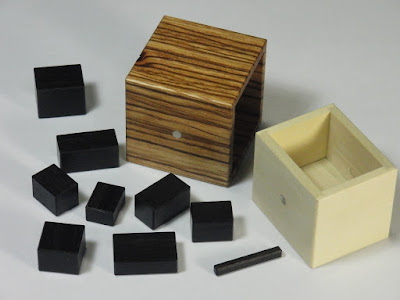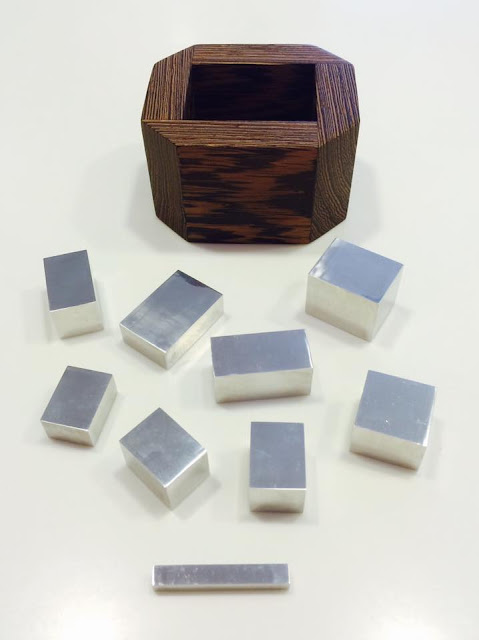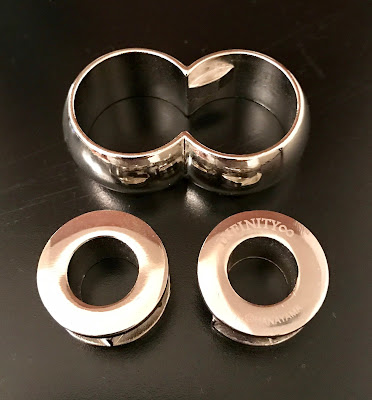 |
| This is the 1st symmetrical shape solution provided by Koahi Arai |
Unless you know the meaning of "symmetrical shape", you won't even know where to begin. There are typically two types of symmetrical shapes possible, one is mirror or line symmetry and the other is rotational symmetry. In most (if not all) of these symmetrical shape type puzzles, usually the object is to find a mirror/line symmetrical shape, which is the case here.
It took me several sessions over two days to find the two solutions. What makes the puzzle so difficult is that the three pieces are pretty similar in shape (and size) to each other and this sets up a huge number of possible combinations for joining the pieces side to side; yet only three symmetrical shapes exist. What an incredible design! I am very sure there is some complicated mathematics to all this but sorry folks, I am not capable of explaining any of it here...all I know is that I tried all sorts of ways to put the pieces together and eventually got the results I wanted.
Overall a very challenging puzzle indeed and a good thing that Koshi revealed one solution at least! If anyone wants to know the other two solution shapes, please contact me via my blog email.











